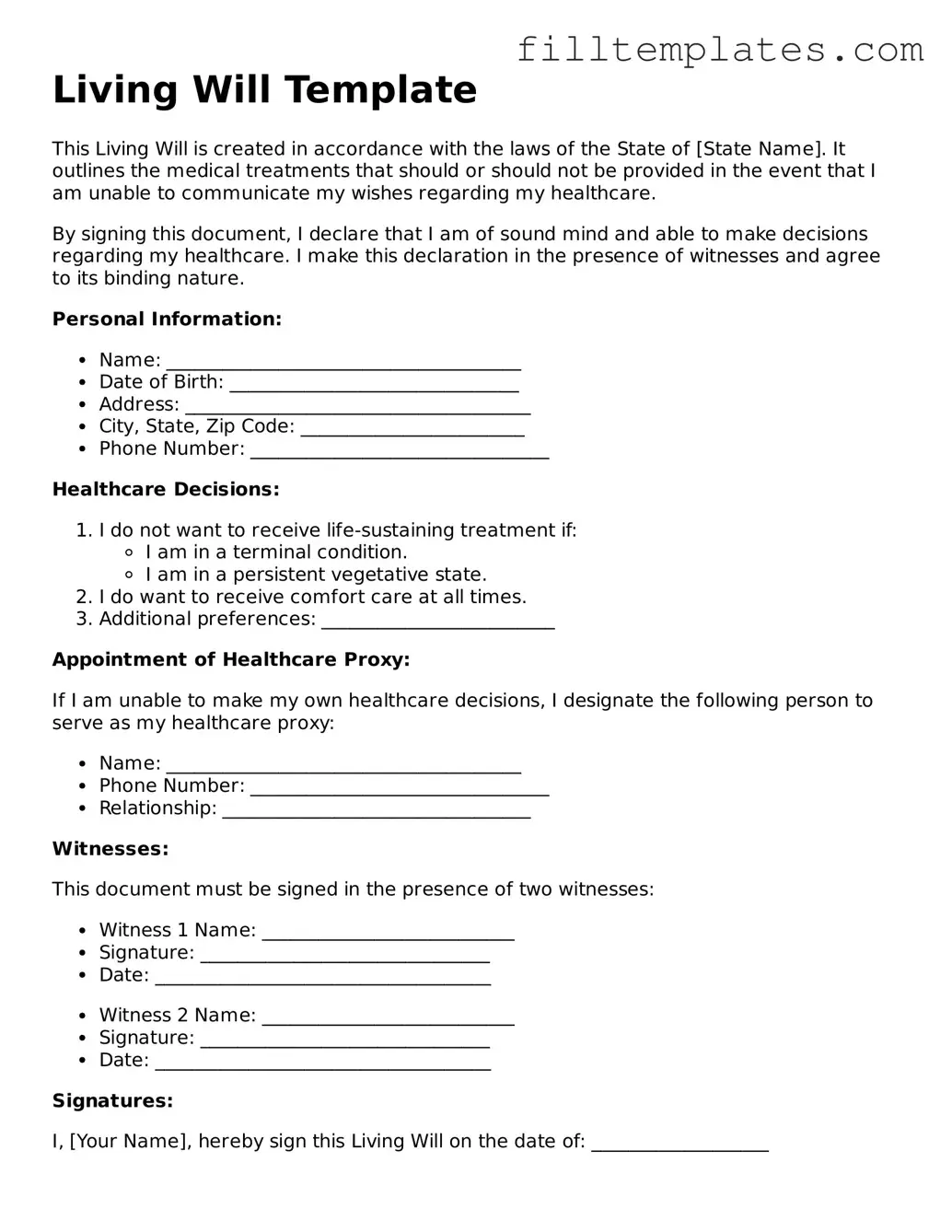Living Will Template
This Living Will is created in accordance with the laws of the State of [State Name]. It outlines the medical treatments that should or should not be provided in the event that I am unable to communicate my wishes regarding my healthcare.
By signing this document, I declare that I am of sound mind and able to make decisions regarding my healthcare. I make this declaration in the presence of witnesses and agree to its binding nature.
Personal Information:
- Name: ______________________________________
- Date of Birth: _______________________________
- Address: _____________________________________
- City, State, Zip Code: ________________________
- Phone Number: ________________________________
Healthcare Decisions:
- I do not want to receive life-sustaining treatment if:
- I am in a terminal condition.
- I am in a persistent vegetative state.
- I do want to receive comfort care at all times.
- Additional preferences: _________________________
Appointment of Healthcare Proxy:
If I am unable to make my own healthcare decisions, I designate the following person to serve as my healthcare proxy:
- Name: ______________________________________
- Phone Number: ________________________________
- Relationship: _________________________________
Witnesses:
This document must be signed in the presence of two witnesses:
- Witness 1 Name: ___________________________
- Signature: _______________________________
- Date: ____________________________________
- Witness 2 Name: ___________________________
- Signature: _______________________________
- Date: ____________________________________
Signatures:
I, [Your Name], hereby sign this Living Will on the date of: ___________________
Signature: ___________________________________
